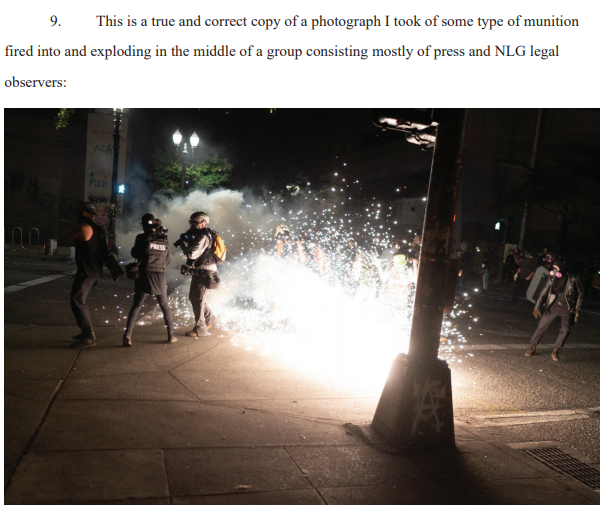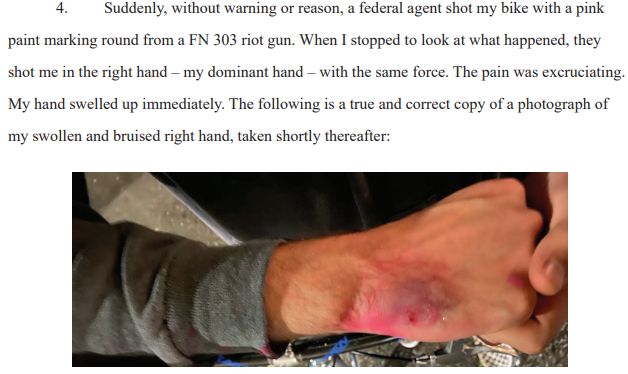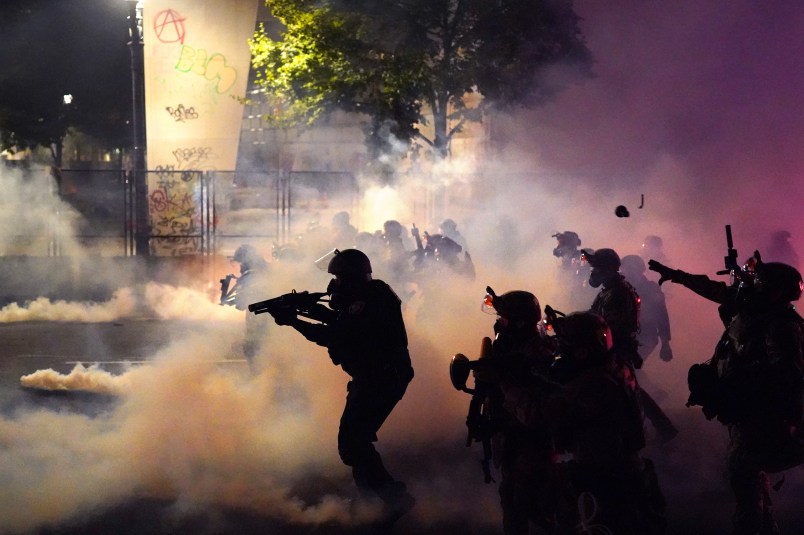A federal judge on Thursday temporarily restrained federal agents in Portland from arresting or targeting journalists and legal observers, writing that absent a court order, law enforcement would “continue to target” them.
Under the same order, from District Judge Michael H. Simon, federal agents in Portland can’t threaten journalists or legal observers, nor can they seize camera equipment outside of a lawful arrest based on probable cause.
The order follows a similar temporary restraining order against city police in the suit issued earlier this month. Simon pointed to that TRO — the city later stipulated to a preliminary injunction — as evidence that the order would not hamper the feds’ work.
“When asked at oral argument why it could be workable for City police but not federal officers, counsel for the Federal Defendants responded that the current protests are chaotic,” Simon wrote. “But as the Federal Defendants have emphatically argued, Portland has been subject to the protests nonstop for every night for more than 50 nights, and purportedly that is why the federal officers were sent to Portland. There is no evidence that the previous 21 nights were any less chaotic.”
In a statement, the ACLU of Oregon’s interim executive director Jann Carson called the order “a victory for the rule of law.”
“Federal agents from Trump’s Departments of Homeland Security and Justice are terrorizing the community, threatening lives, and relentlessly attacking journalists and legal observers documenting protests,” Carson said. “These are the actions of a tyrant, and they have no place anywhere in America.”
Much of the case docket consists of declarations from journalists and legal observers alleging threats and violence from federal agents.
On July 12, for example, photojournalist Mathieu Lewis-Rolland captured a federal agent allegedly shooting him 10 times with “less lethal” rounds, resulting in wounds all over his body. (At three minutes below:)
A week later, on July 19, the photojournalist Jungho Kim captured federal agents allegedly firing munitions into a group of press and legal observers. Kim also alleged he was himself shot with a paint round.

The same day, legal observer Nate Haberman-Ducey — wearing the “unmistakable” neon green hat of the National Lawyers Guild at a near-deserted area outside the Hatfield federal courthouse on Sunday — alleged a federal agent shot him in the hand with a paint marking round.  Haberman-Ducey wrote that he’d like to continue observing protests, but he was worried that federal agents’ teargas would contaminate the splint on his broken hand.
Haberman-Ducey wrote that he’d like to continue observing protests, but he was worried that federal agents’ teargas would contaminate the splint on his broken hand.
Simon wrote in his order that the lawsuit tested whether the principles of open government and free press were “merely hollow words.”
“It is one thing to ask citizens to obey the law in the future to avoid future
alleged harm,” he said. “But it is quite another for the Federal Defendants to insist that Plaintiffs must forgo constitutionally protected activity if they wish to avoid government force and interference.



